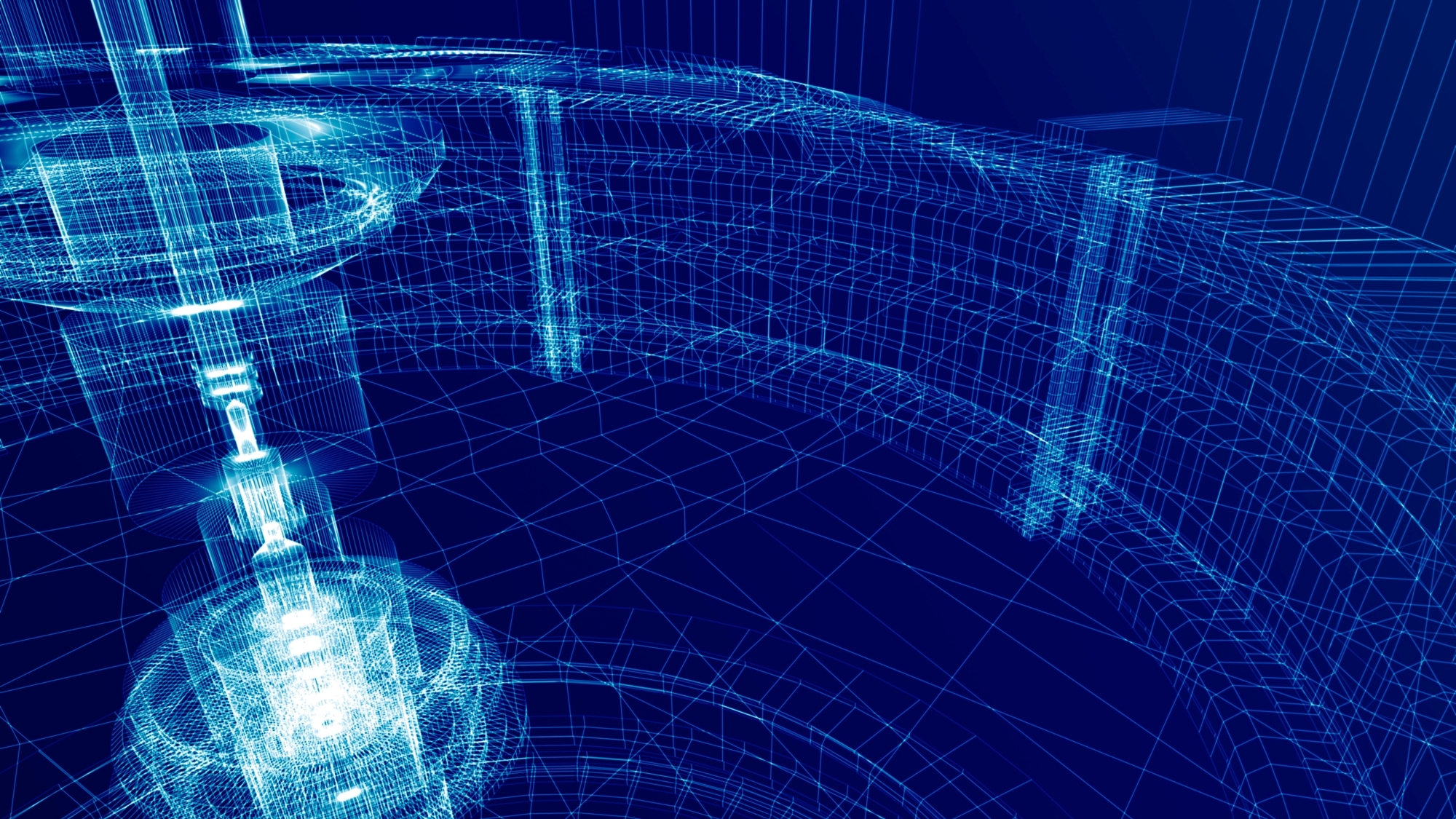Intel and Dell secure deal to build a digital twin of a UK fusion power plant
The simulation will be critical for meeting the ambitious goal of delivering fusion energy to the UK’s energy network in the 2040s


Intel and Dell are to take part in the building of a “digital twin” of the UK’s Spherical Tokamak for Energy Production (STEP) prototype fusion power plant.
The UK Atomic Energy Authority (UKAEA) is collaborating with the tech giants and the Cambridge Open Zettascale Lab to produce a simulation of the plant, in an effort to meet the ambitious goal of delivering fusion energy to the UK’s energy network in the 2040s.
The UKAEA plans to make use of the lab’s supercomputer - based on Intel technologies - with 4th generation Intel Xeon processors running on Dell PowerEdge Servers.
The engineering behind such a fusion power plant requires enormous amounts of modelling and simulation, with a single plasma turbulence simulation potentially outputting hundreds of petabytes of data for analysis.
RELATED RESOURCE

The business value of Dell PowerStore
High-performance storage that can improve performance and reduce operational costs
Thousands of graphics processing unit (GPU) nodes are required for large simulations with the open source Intel Distributed Asynchronous Object Storage (DAOS) object store taking care of the storage needed by high performance computing (HPC) applications.
Intel’s Data Center GPU Max Series chips are being looked at by the UKAEA as part of providing the large step increase in power required to drive the simulations.
During a briefing on Tuesday, Dr Paul Calleja, director of Computing Research at the University of Cambridge, remarked that traditional x86 systems “are not going to get us there” and that GPU technology would provide an order of magnitude increase in performance per watt.
Get the ITPro daily newsletter
Sign up today and you will receive a free copy of our Future Focus 2025 report - the leading guidance on AI, cybersecurity and other IT challenges as per 700+ senior executives
“That’s really what this is about,” he said.
Calleja also called out Intel’s oneAPI, with a nod to SYCL, as “a really interesting programming environment”. The open nature of the standard means that the team has the option to use alternative silicon in the future.
“We can also run those codes on NVIDIA GPUs, and even AMD GPUs with minimal recode,” he explained, “And obviously, some of the coding is required, but it's not extreme.”
As for an operating system, Scientific OpenStack will be used in an effort to make the supercomputers accessible to a broad range of scientists and engineers.
Why do we need all this computing power?
In a word: Time. While it may seem a long away, the 2040s represent a very ambitious timescale considering the historic rate of progress of Fusion energy. As such, there simply isn’t enough time to adopt a fully test-based design process to work out what the power plant should look like.
Head of Advanced Computing at UKAEA, Dr Rob Akers, remarked that “Fusion has long been referred to as an exascale Grand Challenge”.
“We need to exploit the world's largest supercomputers to handle all of this physics and all of this complexity,” he added, “It's an absolutely staggering number of calculations.”
“We'll be able to get to the point where a digital version of STEP starts to emerge before the real plant itself,” he said. ”In the short term, we'll be able to use that digital version … to dramatically reduce the need for real world validation.
“So we'll be able to be a lot more intelligent around which components that we do have to prototype and test. And we'll be able to be a lot more intelligent about where we have to introduce design margin, or design overhead in order to make sure that the power plant has the efficacy to deliver power to the grid.”
In the longer term, there is the potential to turn the design into a full digital twin of the power plant for operational planning and anomaly detection.
What is STEP?
The Spherical Tokamak for Energy Production is a UKAEA programme to demonstrate the ability to generate electricity from fusion. A concept design is expected by 2024 and construction of the plant is expected to be complete “around” 2040.
According to the UKAEA “Fusion power creates nearly four million times more energy for every kilogram of fuel than burning coal, oil, or gas".
Akers described the project as “effectively a moonshot programme”, the goal of which was to prove fusion can be economically viable. It is, however, not expected to be a commercially operating plant at this stage.
Other fusion projects underway globally include ITER, which is expected to become operational at the end of 2025 with the goal of demonstrating a large fusion reactor rather than generating electricity.

Richard Speed is an expert in databases, DevOps and IT regulations and governance. He was previously a Staff Writer for ITPro, CloudPro and ChannelPro, before going freelance. He first joined Future in 2023 having worked as a reporter for The Register. He has also attended numerous domestic and international events, including Microsoft's Build and Ignite conferences and both US and EU KubeCons.
Prior to joining The Register, he spent a number of years working in IT in the pharmaceutical and financial sectors.
-
 Bigger salaries, more burnout: Is the CISO role in crisis?
Bigger salaries, more burnout: Is the CISO role in crisis?In-depth CISOs are more stressed than ever before – but why is this and what can be done?
By Kate O'Flaherty Published
-
 Cheap cyber crime kits can be bought on the dark web for less than $25
Cheap cyber crime kits can be bought on the dark web for less than $25News Research from NordVPN shows phishing kits are now widely available on the dark web and via messaging apps like Telegram, and are often selling for less than $25.
By Emma Woollacott Published
-
 Equinix and Dell Technologies want to transform AI infrastructure
Equinix and Dell Technologies want to transform AI infrastructureNews Dell AI Factory technology will be integrated into the Equinix global network of data centers
By Emma Woollacott Published
-
 The Total Economic Impact™ of the Intel vPro® platform as an endpoint standard
The Total Economic Impact™ of the Intel vPro® platform as an endpoint standardwhitepaper Protection across AI attack vectors
By ITPro Published
-
 Testing the Value of Dell™ PowerEdge™ R750 Servers with Windows Server® 2022 Preinstalled
Testing the Value of Dell™ PowerEdge™ R750 Servers with Windows Server® 2022 Preinstalledwhitepaper Protection across AI attack vectors
By ITPro Published
-
 Discover the six superpowers of Dell PowerEdge servers
Discover the six superpowers of Dell PowerEdge serverswhitepaper Transforming your data center into a generator for hero-sized innovations and ideas.
By ITPro Published
-
 AI enablement and built-in security are must-have features on modern storage environments
AI enablement and built-in security are must-have features on modern storage environmentswhitepaper Modernize storage infrastructure to serve future application demands
By ITPro Published
-
 Accelerate AI initiatives on Dell VxRail
Accelerate AI initiatives on Dell VxRailwhitepaper Protection across AI attack vectors
By ITPro Published
-
 Choose high data-efficiency technology for lower storage TCO
Choose high data-efficiency technology for lower storage TCOwhitepaper Choose high data-efficiency technology for lower storage TCO
By ITPro Published
-
 PowerStore resiliency
PowerStore resiliencywhitepaper PowerStore resiliency
By ITPro Published